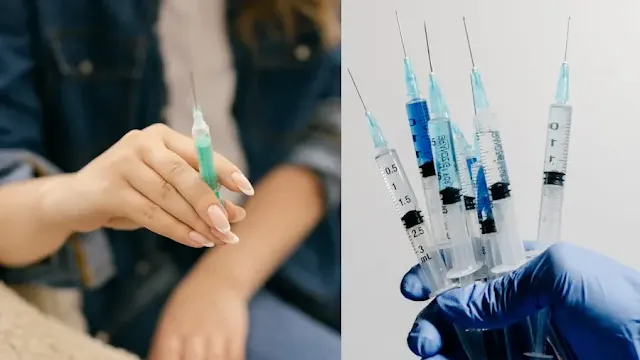Navigating Medication Guidelines for Your Journey to India
Planning a trip to India to marvel at the Taj Mahal or soak in Kerala’s serene backwaters is thrilling, but traveling with medications can be daunting. On my first trip to Delhi, I nearly faced a customs delay because I didn’t know I needed a doctor’s letter for my prescription meds. That experience taught me the importance of preparation. This guide will help you navigate India’s strict medication rules, ensuring your journey is smooth and stress-free, whether you’re carrying prescription drugs or over-the-counter remedies.
Table of Contents
Can You Bring Your Medication to India?
You can bring medications to India for personal use, but compliance with regulations is essential. India’s customs and drug laws, enforced by the Central Drugs Standard Control Organization (CDSCO), set clear guidelines:
- Prescription Medications: Carry drugs in their original packaging with labels showing your name, medication name, and prescribing doctor’s details.
- Over-the-Counter Medications: Common OTC drugs like ibuprofen or paracetamol are generally permitted, but verify they’re not on India’s restricted list.
- Controlled Substances: Medications like opioids or psychiatric drugs fall under the Narcotic Drugs and Psychotropic Substances (NDPS) Act. A prescription and doctor’s letter explaining medical necessity are mandatory.
- Quantity Limits: Bring only enough for your trip, typically up to a 90-day supply, to avoid customs scrutiny.
- Special Medications: For rare drugs, include a doctor’s letter detailing their purpose to prevent delays.
For more details, check INCB’s guidelines for travelers.
What’s Off-Limits and What Needs Declaring?
India prohibits certain medications, particularly narcotics and psychotropic substances, unless accompanied by proper documentation. Always declare controlled substances or large quantities at customs to avoid penalties, confiscation, or legal issues. The Central Board of Indirect Taxes and Customs (CBIC) provides a list of restricted items. Failure to comply with India’s NDPS Act can lead to serious consequences, so verify restrictions via the CDSCO website before traveling.
Before You Fly
Proper preparation ensures a seamless experience when traveling with medications:
- Check Regulations: Consult the Indian Embassy or CDSCO for updated rules, as regulations may change.
- Carry Documentation: Bring prescription copies, medical certificates, and a doctor’s letter in English to verify medications are for personal use.
- X-Ray Safety: Worried about airport scanners? Learn if airport X-rays affect medications.
- Refrigerated Medications: For temperature-sensitive drugs, review guidelines on transporting refrigerated medication.
Airlines like IndiGo offer advice on carrying medical supplies.
Specific Tips for Smooth Medication Travel
These practical tips address common concerns for travelers:
- Pack in Hand Luggage: Store medications in your carry-on to protect them from temperature changes or loss in checked bags.
- Diabetes Supplies: Carry insulin, syringes, or glucose monitors in hand luggage with a doctor’s letter. See tips for diabetics traveling to India.
- Controlled Substances: For narcotics or psychiatric drugs, carry detailed documentation to prove medical necessity.
- Local Pharmacies: India has well-stocked pharmacies like Netmeds, but some drugs require a local prescription.
For additional advice, explore NHS Fit for Travel.
Frequently Asked Questions
What prescription drugs are not allowed in India?
Certain narcotics and psychotropic substances, like specific opioids or sedatives, are prohibited unless accompanied by a prescription and doctor’s letter. Check the CDSCO for a restricted list.
Do I need to declare prescription medication at customs?
Yes, declare controlled substances or large quantities at customs to avoid penalties. Carry a prescription and doctor’s letter in English for verification.
What are the customs rules for medicines in India?
Bring up to a 90-day supply for personal use in original packaging with a prescription. Declare controlled substances to customs, and verify restrictions via CDSCO.
Can I pack medicine in my checked luggage?
While allowed, it’s risky due to potential loss or temperature fluctuations. Pack medications in hand luggage for safety and accessibility.
What medicine is not allowed on a plane?
Prohibited medications include narcotics or psychotropic drugs without documentation. Check airline policies and CDSCO for restricted substances.
Where to put medication when flying?
Always pack medications in your carry-on luggage in original containers with prescriptions to ensure access and avoid damage or loss.
Related Resources
Do you need any vaccinations to travel to India?
Travelling with Medicines to India
Transporting Refrigerated Medication on India Flights
Are Insulin Syringes Allowed on Airplanes? Travel Tips for Diabetics
Peanut Allergies on India Flights
Do airport x-rays affect medications?
Overcoming Air Sickness on Indian Domestic Flights
NHS: Travelling with Medicines
CBP: Bringing Medications into the U.S.








